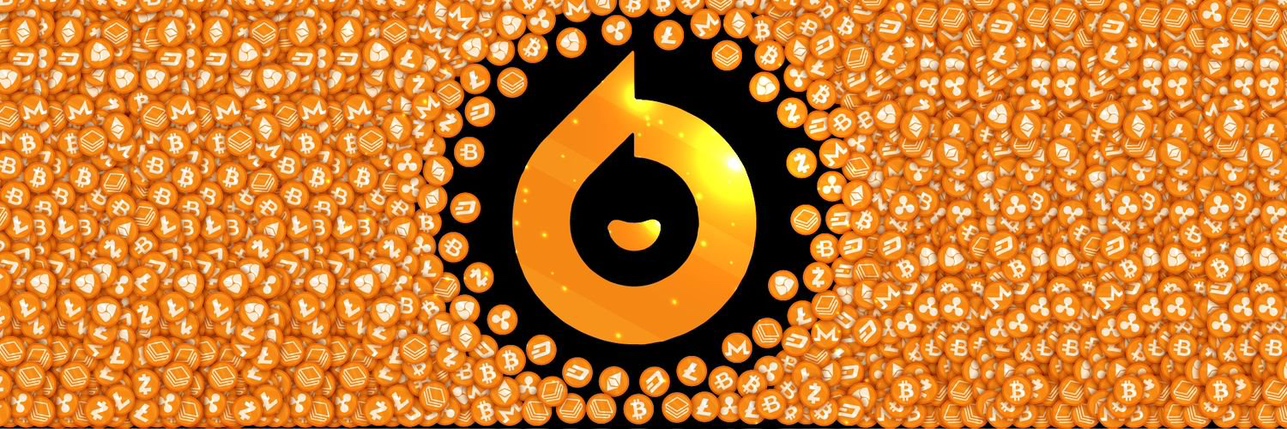
Litecoin priceLTC
Pi Network (PI) will be listed on bitget, you can quickly sell or buy PI. Check out more pi updates !
LTC/USD price calculator
Litecoin market Info
Live Litecoin price today in USD
Der Kryptomarkt zeigte sich am 17. Oktober 2025 in einer Phase erheblicher Turbulenzen, die von makroökonomischen Ängsten und einem deutlichen Rückgang der Anlegerstimmung geprägt war. Bitcoin (BTC) und Ethereum (ETH) führten einen breiteren Marktabschwung an, während spezifische Altcoins trotz der Volatilität bemerkenswerte Bewegungen zeigten. Dies geschah inmitten einer Flut von Liquidationen und einer zunehmend vorsichtigen Haltung der Anleger, obwohl einige Analysten die aktuelle Situation als Akkumulationsgelegenheit betrachteten.
Marktabschwung und makroökonomische Belastungen
Der Kryptowährungsmarkt erlebte heute den dritten Tag in Folge einen erheblichen Rückgang. Bitcoin fiel auf unter 109.000 US-Dollar und erreichte zwischenzeitlich Werte um 105.231 US-Dollar, während Ethereum unter die Marke von 4.000 US-Dollar rutschte und bis auf 3.731 US-Dollar sank. [1] Die gesamte Marktkapitalisierung sank unter 3,8 Billionen US-Dollar. [21] Dieser Abwärtstrend wurde maßgeblich durch die wieder aufkeimenden Ängste im US-Bankensektor ausgelöst, nachdem Berichte über faule Kredite bei zwei regionalen US-Banken aufkamen. [1] Darüber hinaus trugen anhaltende Handelsspannungen zwischen den USA und China zu einer allgemeinen Risikoaversion an den globalen Märkten bei. [5] Dies führte zu einem „Flight to Safety“, bei dem Anleger risikoreichere Anlagen, einschließlich Kryptowährungen, mieden und stattdessen sicherere Häfen wie Gold suchten, das ein neues Rekordhoch erreichte. [5]
Die Auswirkungen dieser Ereignisse waren auch in den Liquidationszahlen deutlich. Innerhalb der letzten 24 Stunden wurden Krypto-Positionen im Wert von 723 Millionen US-Dollar liquidiert, wobei der Großteil auf Long-Positionen entfiel. [1] Dies folgte auf ein turbulentes Ereignis in der Vorwoche, bei dem Liquidationen im Wert von 19 Milliarden US-Dollar den Markt erschütterten. [5]
Anlegerstimmung auf Tiefpunkt, aber Akkumulation im Fokus
Die Anlegerstimmung erreichte einen Tiefpunkt, wie der Crypto Fear & Greed Index zeigte, der auf ein Jahres-Tief von 24 („Fear“) sank. [2] Das Interesse an Suchanfragen nach „Bitcoin“ bei Google lag ebenfalls auf einem der niedrigsten Stände seit Monaten, was die nachlassende Begeisterung widerspiegelt. [2, 4] Trotz dieser bärischen Signale sehen Analysten von Bitwise in der aktuellen Korrektur eine „goldene Gelegenheit für Anleger, zu akkumulieren statt in Panik zu geraten“. [2, 4] Sie argumentieren, dass externe Faktoren wie die Handelsspannungen die Hauptursache für den Rückgang seien und dass solche Phasen oft den Beginn eines Erholungszyklus markieren. [2]
Altcoin-Dynamik und technologische Fortschritte
Der Altcoin-Markt zeigte heute gemischte Signale, tendierte aber mehrheitlich nach unten. Der Altcoin Season Index fiel von 78 auf 25, was auf eine deutliche Rotation von Altcoins zurück zu Bitcoin hindeutet. [1] Viele Altcoins, darunter Render (RENDER) und Filecoin (FIL), verzeichneten Rückgänge von über 7%. [1] Einige Ausnahmen gab es jedoch: Zora (ZORA), ein Layer-2-Projekt, legte um 18% zu. [1] Chiliz (CHZ) stieg um 12%, angetrieben durch die bevorstehende Snake8-Hardfork, die das Validatorensystem verbessern soll. [11] Bittensor (TAO) verzeichnete einen starken Anstieg von 36%, nachdem Grayscale einen Form 10-Antrag bei der US SEC für ihren Bittensor Trust eingereicht hatte, was breitere institutionelle Investitionsmöglichkeiten eröffnen könnte. [11] Im Gegensatz dazu wurde Sei (SEI) aufgrund einer bevorstehenden großen Token-Freigabe, die das Angebot erhöhen und den Preis unter Druck setzen könnte, mit Vorsicht betrachtet. [11]
Im Bereich dezentraler Finanzen (DeFi) gab es wichtige Entwicklungen. Uniswap hat native Solana-Unterstützung in seine Webanwendung integriert. [24] Dies ist das erste Mal, dass die Ethereum-basierte DEX eine Nicht-EVM-Blockchain unterstützt, was die Interoperabilität zwischen Ethereum und Solana erheblich verbessert und Uniswap als Multi-Chain-DeFi-Gateway positioniert. [24] Diese Integration nutzt die Jupiter API, um nahtlose Swaps über eine Million Solana-Tokens zu ermöglichen. [24] Derweil warnen Kritiker, dass ein Vorschlag für eine „eingeschränkte Liste“ risikoreicher DeFi-Protokolle in den USA, der von Demokraten vorangetrieben wird, die Innovation behindern und Projekte ins Ausland verlagern könnte. [26]
Auch im Ethereum-Ökosystem gab es bemerkenswerte Aktivitäten. Whales akkumulierten über 417 Millionen US-Dollar in ETH, was auf ein starkes langfristiges Vertrauen hindeutet. [19] Ethereum führte zudem mit 16.000 neuen Entwicklern im Jahr 2025 das Wachstum im Blockchain-Sektor an, gefolgt von Solana mit 11.500 neuen Entwicklern. [20]
Ausblick und wichtige Termine
Obwohl der Markt von Unsicherheit geprägt ist, bleibt Oktober 2025 ein ereignisreicher Monat für die Kryptobranche, mit zahlreichen Konferenzen und Gipfeltreffen wie der 11. European Blockchain Convention und dem Blockchain Life Forum. [3, 6, 7] Die institutionelle Akzeptanz, einschließlich der Genehmigung von Spot Bitcoin-ETFs und der potenziellen Spot-ETFs für Altcoins wie Solana, gilt weiterhin als wichtiger Wachstumstreiber für das vierte Quartal 2025. [28, 29] Bitwise-Analysten betonen auch, dass Tokenisierung von realen Vermögenswerten und die Reifung von DeFi-Lösungen wichtige Trends sind, die das Wachstum vorantreiben werden. [22, 28, 30]
Zusammenfassend lässt sich sagen, dass der Kryptomarkt am 17. Oktober 2025 eine herausfordernde Phase durchlebte, die von Preisrückgängen, Liquidationsdruck und einer pessimistischen Anlegerstimmung gekennzeichnet war. Dennoch gibt es unter der Oberfläche weiterhin bedeutende Entwicklungen in den Bereichen DeFi, Altcoins und institutionelle Akzeptanz, die das Potenzial für eine zukünftige Erholung und Wachstum bergen.
Do you think the price of Litecoin will rise or fall today?
Now that you know the price of Litecoin today, here's what else you can explore:
How to buy Litecoin (LTC)?How to sell Litecoin (LTC)?What is Litecoin (LTC)What would have happened if you had bought Litecoin (LTC)?What is the Litecoin (LTC) price prediction for this year, 2030, and 2050?Where can I download Litecoin (LTC) historical price data?What are the prices of similar cryptocurrencies today?Want to get cryptocurrencies instantly?
Buy cryptocurrencies directly with a credit card.Trade various cryptocurrencies on the spot platform for arbitrage.Litecoin price prediction
When is a good time to buy LTC? Should I buy or sell LTC now?
What will the price of LTC be in 2026?
In 2026, based on a +5% annual growth rate forecast, the price of Litecoin(LTC) is expected to reach $99.02; based on the predicted price for this year, the cumulative return on investment of investing and holding Litecoin until the end of 2026 will reach +5%. For more details, check out the Litecoin price predictions for 2025, 2026, 2030-2050.What will the price of LTC be in 2030?
About Litecoin (LTC)
What Is Litecoin?
Litecoin (LTC) is a decentralized open-source blockchain and is widely considered the first successful alternative coin in the market. Created in 2011 by Charlie Lee, a former Google engineer, Litecoin was designed as silver to Bitcoin's gold. While sharing similar traits, Litecoin stands out with its faster block generation times (2.5 minutes compared to Bitcoin's 10 minutes) and unique mining algorithm, Scrypt.
Litecoin was conceived as a hard fork from Bitcoin, explicitly designed to address and rectify the perceived limitations of the original cryptocurrency. Its key distinguishing characteristics include:
- A fair launch,
- A reduced block generation time,
- A increased total token supply,
- A unique hashing algorithm, and
- A distinct Graphic User Interface (GUI).
Resources
Official website: https://litecoin.org/
How Does Litecoin Work?
Blockchain and Mining
Litecoin operates using blockchain technology, which is a decentralized ledger kept up by "miners". In the context of Litecoin, mining refers to the process by which transactions are verified and added to the public blockchain ledger.
When a transaction occurs, it is grouped with others into a 'block'. Miners then verify these blocks by solving complex mathematical problems. The first miner to solve the problem gets to add the block of transactions to the existing chain of blocks, hence the term 'blockchain'. This miner is rewarded with newly created Litecoins. This mining process not only rewards miners but also serves to secure the network and verify transactions.
Scrypt Algorithm
One key difference between Litecoin and Bitcoin is the cryptographic algorithm they use to mine new coins. Litecoin uses a memory-intensive algorithm known as Scrypt, whereas Bitcoin uses a processing-intensive algorithm known as SHA-256.
Scrypt was chosen by Charlie Lee to make Litecoin mining more accessible to individuals by allowing them to use consumer-grade hardware like GPUs rather than the more expensive, specialized hardware required by Bitcoin’s SHA-256. This feature makes Litecoin more democratized and less susceptible to being monopolized by mining pools.
Faster Transaction Speeds
Litecoin's block generation time is approximately 2.5 minutes, which is four times faster than Bitcoin's 10 minutes. This shorter block generation time allows for faster transaction confirmations. It's an aspect that makes Litecoin an attractive option for merchants and customers who seek faster transaction times.
Finite Supply
Just like Bitcoin, Litecoin has a finite supply. The maximum number of Litecoins that can ever exist is 84 million, which is four times greater than the total supply of Bitcoin. As of July 2023, over 73 million Litecoins had already been mined
2023 Litecoin Halving
Litecoin halving event is rooted in the principles of scarcity and gradual reduction of block rewards. When Litecoin was first created, miners were rewarded with 50 LTC for every block they mined. Every 840,000 blocks — approximately every four years — this reward halves. In 2019, the reward decreased from 25 to 12.5 LTC, and in the upcoming 2023 halving, it will reduce further to 6.25 LTC.
This reduction process, known as "halving," is a deflationary mechanism. It effectively controls the rate at which new Litecoins enter the market, making the digital asset scarcer over time. The upcoming halving in 2023 will reduce the annual Litecoin inflation rate from around 4% to approximately 2%.
What Determines Litecoin's Price?
Understanding what determines the Litecoin price involves a multi-faceted approach that considers various market dynamics and indicators. One of the most significant factors affecting the current Litecoin price is the concept of "halving," a pre-programmed event in the Litecoin blockchain that reduces the mining rewards by half. This event, which occurs approximately every four years, impacts the Litecoin market cap and has historically led to volatile price movements in LTC to USD rates.
For example, Litecoin's price history shows that the price had dropped for months after each of its prior two halvings but also saw significant rallies leading up to these events. Halving effectively reduces the amount of new Litecoin supply, affecting its price and its conversion rate to USD.
Technical indicators also play a crucial role in Litecoin price prediction. Traders often use tools like the Relative Strength Index (RSI), Moving Averages, and the MACD to analyze the Litecoin price chart. These indicators help in identifying Litecoin's support and resistance levels and provide insights into market supply and demand. An RSI reading above 50, for instance, usually indicates bullish momentum in the Litecoin value, while readings below 50 suggest a bearish trend.
Market sentiment and external factors can also influence the Litecoin price today. Events like Litecoin's listing on new cryptocurrency exchanges or the filing of Bitcoin ETFs by major financial institutions can give Litecoin and other crypto assets a boost. Furthermore, Litecoin price live updates are closely monitored by traders who use various time frames to determine long-term, intermediate, and short-term trends.
The Litecoin price forecast is a complex interplay between internal blockchain events like halving, technical indicators, and external market factors. Keeping an eye on these elements can help you make an informed Litecoin price analysis and offer a more accurate Litecoin price prediction. By monitoring the Litecoin price history and its current price, you'll be better equipped to make sound investment decisions.
Conclusion
Litecoin, as a pioneering altcoin, offers innovations like rapid transaction times and the unique Scrypt algorithm. Its distinctive features have enhanced decentralization, accessibility, and security within the crypto space. With its upcoming halving in 2023 set to induce scarcity, Litecoin's market dynamics will be intriguing to watch. As we further embrace the digital era, Litecoin's role in facilitating efficient transactions globally remains vital. In essence, Litecoin continues to uphold its creator's vision - serving as 'the silver to Bitcoin's gold'.
Related Articles about Litecoin
Understanding the 2023 Litecoin Halving: An In-depth Analysis
Bitget Insights




What can you do with cryptos like Litecoin (LTC)?
Deposit easily and withdraw quicklyBuy to grow, sell to profitTrade spot for arbitrageTrade futures for high risk and high returnEarn passive income with stable interest ratesTransfer assets with your Web3 walletWhat is Litecoin and how does Litecoin work?
Global Litecoin prices
Buy more
FAQ
What is the current price of Litecoin?
What is the 24 hour trading volume of Litecoin?
What is the all-time high of Litecoin?
Can I buy Litecoin on Bitget?
Can I get a steady income from investing in Litecoin?
Where can I buy Litecoin with the lowest fee?
Related cryptocurrency prices
Prices of newly listed coins on Bitget
Hot promotions
Where can I buy Litecoin (LTC)?
Video section — quick verification, quick trading









